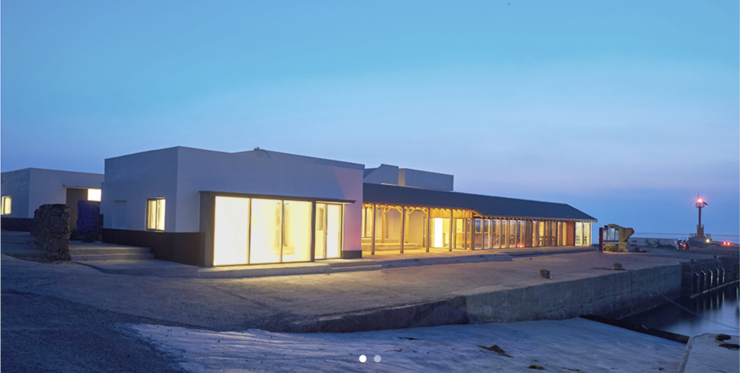| |
 |
|
| ▲ Provide images. Gapado Project Website |
Gapado is an island once inhabited by more than 1,000 people. However, the island, which is 20.5 meters high and only 1.3 kilometers from end to end, is now home to less than 200 residents.
Despite its small size, Gapado gets attention once a year. When April comes, green barley swaying in the wind covers the whole island and people rush in like a tide. In May, however, they all move out like an ebb tide and once again the island becomes quiet.
At one time, nature on the island was harmed due to the temporary facilities built for this one season business. In 2012, Jeju Special Self-Governing Province and Hyundai Card collaborated to rebuild Gapado. Their mission was to create an all new Gapado sustainable island, where ecology, economy, and culture coexist. As part of its Corporate Social Responsibility, Hyundai Card started 'Gapado Project' with villagers in Gapa Island.
| |
 |
|
| ▲ Provide images. Gapado Project Website |
Hyundai Card's 'Gapado Project' seeks sustainable development in order to both develop the island and preserve its environment.
As part of the project, Hyundai Card built three buildings 'Gapado Terminal', 'Gapado House'(Accommodation) and 'Gapado AiR(AiR - Artist in Residence)’ that look like they are connected to the landscape of the island. The color of the buildings is gray, similar to the color of basalt. This is so they fit in seamlessly with the existing houses and the low terrain of Gapado.
The philosophy of ‘Gapado Project’ is ‘to plant culture on the island’. Gapado AiR and the writers who have moved into Gapado AiR are at the center of this culture. Gapado AiR is a building consisting of a ground floor and a basement floor where writers spend months on their work. There are private living spaces as well as private studios, galleries, and observation decks.
| |
 |
|
| ▲ Provide images. Gapado Project Website |
Artists who want to reside on the island are selected by people including those who work for the National Museum of Contemporary Art, the Museum of Contemporary Art in New York, and the curator of London’s Tate Modern Museum. Enteries are selected in March and September of every year. Currently, the selection of the second batch of artists has been completed.
Gapado hopes to build a regeneration project with the image of an ‘Island of Art’ with the participation of its villagers. Villagers will run the Gapado Terminal, Gapado House, the Fishing Center, and the restaurant and snack bar, which were built as a part of the Gapado Project.
It operates in the form of a cooperative group of residents and two-thirds of the 100 actual residents have registered. With the exception of the elderly, almost everyone on the island is participating in the project.
| |
 |
|
| ▲ Provide images. Gapado Project Website |
The Gapado Project is similar to the art island project on Naoshima in Japan. However, the project on Naoshima was, led by a publishing education company called Benesse, had a low participation by the residents.
On the other hand, the ‘Gapado Project’ was led by a leading corporation and government offices. The difference is that they created a structure that allowed residents to actively participate in the operation afterward its completion.
| |
 |
|
| ▲ Gapado |
Many rebuilding projects that are operated by the government end up as a showcase for government action, leaving residents isolated or even forced out of their homes. This leads people to wonder who the projects are actually for. This is not the case on Gapado. Instead, the large corporation used its assets and resources to develop a small island while taking the voices of the villagers into consideration. |
























